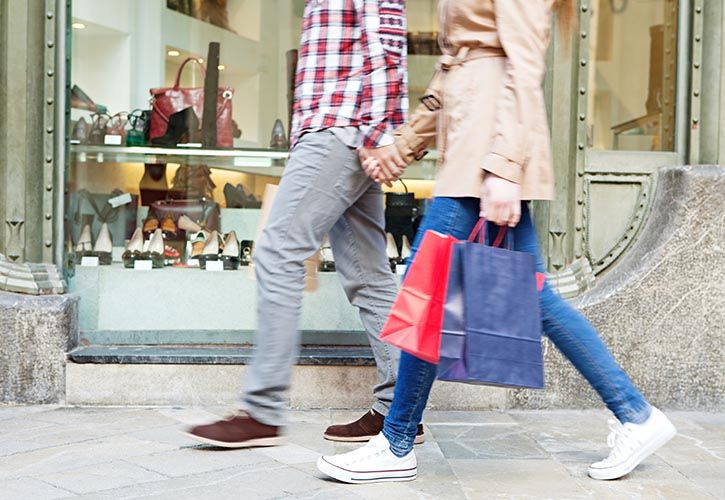UK DIY News
April Sees Increase In Retail Sales

The BRC has published retail sales data covering the four weeks 2 – 29 April 2023.
- UK Total retail sales increased by 5.1% in April, against a decline of 0.3% in April 2022. This is in line with the 3-month average growth of 5.1% and above the 12-month average growth of 3.0%.
- UK Like-for-like retail sales increased by 5.2% in April, against a decline of 1.7% in April 2022. This was above the 3-month average growth of 5.0% and the 12-month average growth of 2.7%.
- Food sales increased 9.8% on a Total basis and 10.0% on a Like-for-like basis over the three months to April. This is above the 12-month Total average growth of 6.3%. For the month of April, Food was in growth year-on-year.
- Non-Food sales increased 1.2% on a Total basis and 0.8% on a like-for-like basis over the three-months to April. This is above the 12-month Total average growth of 0.2%. For the month of April, Non-Food was in growth year-on-year.
- Over the three months to April, In-store Non-Food sales increased 3.9% on a Total basis and 3.3% on a Like-for-like basis since April 2022. This is above the Total 12-month average growth of 3.6%.
- Online Non-Food sales decreased by 3.6% in April, against a decline of 13.9% in April 2022. This is steeper than the 3-month average decline of 2.9% and shallower than the 12-month decline of 4.4%.
- The proportion of Non-Food items bought online (penetration rate) decreased to 37.3% in April from 38.8% in April 2022.
Helen Dickinson OBE, Chief Executive | British Retail Consortium
“While retail sales grew in April, overall inflation meant volumes were down for both food and non-food as customers continued to adjust spending habits. Clothing sales underperformed as the poor weather left customers thinking twice before decking out their summer wardrobe. Meanwhile, a boost to overseas tourism over Easter helped jewellery, watches and cosmetics.
“Retailers hope sales will improve over the warmer summer months, especially as consumer confidence stabilises and inflation begins to ease. However, they continue to face huge cost pressures from a tight labour market, high energy prices, and other rising input costs, with many retailers reporting lower profits this year as a result. Government needs to ensure that any additional regulatory cost burdens are kept to a minimum as these add to inflation.”
Paul Martin, UK Head of Retail | KPMG
“Retail sales held steady in April with 5% growth on last year, but against a background of higher inflation year-on-year, masking how much is actually healthy growth for the sector.
“It was a mixed bag for the high street, with sales of footwear, food and jewellery performing strongly whilst more categories slipped into negative territory as clothing and computing continued to witness declining sales. Online retailers continued to feel the pressure in April, with both sales growth and penetration rates falling as the market rebalances after the pandemic and consumers choose to bargain hunt in store.
“Consumer demand has so far been fairly resilient to the twin drags of high inflation and high interest rates, but as government energy support comes to an end for many, savings start to dwindle and other household bills rise, it is likely that the next few months will continue to be challenging as the consumer tank empties. Much hinges on whether soaring food inflation can be brought under control enough to allow consumers to comfortably start spending again on non-essential items.
“Retailers will be hoping that the Coronation, coupled with a month full of bank holidays and inflation levels starting to head in the right direction, will boost consumer confidence significantly enough to start to see real, profitable growth.”
Food & Drink sector performance | Susan Barratt, CEO | IGD
“Food and drink sales in April continued the same trajectory seen in recent months; volume sales were negative and value sales were positive, driven by ongoing inflation. In response, retailers have been stepping up their support to shoppers, with further high-profile innovation and investment in loyalty schemes in April, providing access to better prices.
“Despite the continued doom and gloom, IGD’s Shopper Confidence Index improved a little in April. Trust in the food and consumer goods industry saw a notable improvement, especially around availability, with 65% trusting the industry to maintain good availability compared to 58% the previous month. Despite rising costs, our data shows shoppers continue to prioritise health and sustainability. Some 87% of shoppers say they are trying to eat more healthily (88% April ‘22), and 79% claiming the impact on the environment was important to them when choosing what food or grocery product to buy (80% April ‘22).”
Source : BRC
Image : shutterstock.com / 130030334
For all the very latest news and intelligence on the UK's largest home improvement and garden retailers, sign up for the Insight DIY weekly newsletter.
Thank you for the excellent presentation that you gave at Woodbury Park on Thursday morning. It was very interesting and thought-provoking for our Retail members. The feedback has been excellent.











































